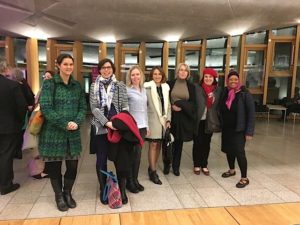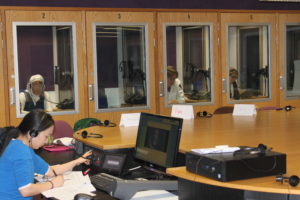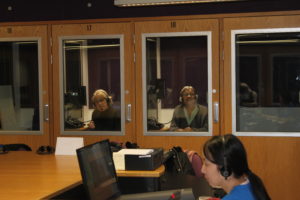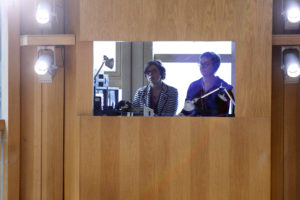by Fanny Chouc

LINCS held its first virtual conference interpreting class in cooperation with SCIC today, with a select group of talented MA and MSc students. Thanks to the support of our AV team, we were able to set up the system used by SCIC to provide pedagogical assistance in interpreting training institutions across Europe.
So is this the start of a new era? Is distance-teaching going to be the way forward for interpreting training, and could it replace face-to-face teaching?
No quite yet: technology has its limits, and connections sometimes broke up, for brief periods. And even if there is a drive towards video-interpreting in some fields, a screen can’t give you the same feel as a live audience. Mastering nerves is a crucial part of interpreting training. It’s therefore very important for trainee interpreters to experience a real, live audience: the dynamics, logistics and overall communication change greatly, and being prepared for this is essential.

But this experience was immensely useful. This is a great way to involve a range of talented trainers from Brussels for a few hours, without any plane, train or taxi journey required. The team of professional SCIC interpreters simply connected from one of their rooms in Brussels, and LINCS students worked in the familiar setting of our large conference interpreting lab. So this type of technology facilitated an excellent training session with experienced professionals without any travelling required on either part – a clear benefit for universities located far away from the epicentre of European life, and a great way for SCIC interpreters to interact with young talents who aren’t on their doorstep, but aren’t short of skills!
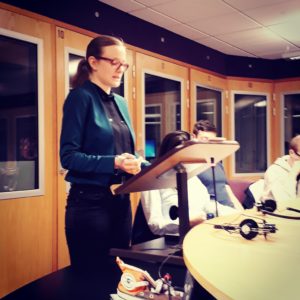
This experience has also been a great way to bridge another invisible gap: the DGI can seem rather distant, and almost unattainable; possibly even more so from the distant shores of Bonnie Scotland. And yet after the session, our students gladly admitted that the speeches didn’t throw them: content, pace and level of difficulties mirrored fairly what they’d been doing in class during the year. Some even commented that the pace wasn’t quite as punishing as in classes they’d had at Heriot-Watt! The very positive feedback, focused on a number of aspects regularly discussed in class, also contributed to their confidence: they now realise that an EU interpreting career could be within their grasp, they have a better idea of what they need to work on, and most of them are now determined to apply for the accreditation tests.
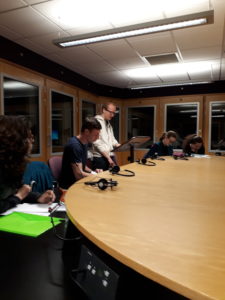
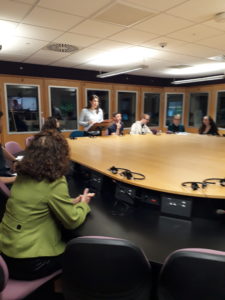
So even if virtual interpreting classes aren’t about to replace live university programmes, they are certainly an amazing way to build bridge with international organisations such as the EU, and possibly to set up more cooperation across campuses and between interpreting training universities. We’re therefore looking forward to building on this success for further virtual classes with SCIC and hopefully with partner universities abroad!
Thank you Fanny Chouc and Jose Maria Conde for organising this 🙂

